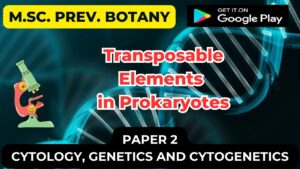![]()
GISH:
- GISH (genome in situ hybridization) is a cytogenetic technique for radio labeling portions of the genome within cells.
- GISH was created for plant breeding and animal hybrid cell lines.
- The GISH approach, which is an improvement on FISH, is commonly used to examine plants.
- GISH approaches aid in the differentiation of a cell’s genomes.
- Because this strong technique can discriminate genomes in hybrids,
- GISH is now being utilized to research hybrid cell lineages, genetic improvement programs, and polyploid evolution.
- GISH is a tool for analyzing meiotic behavior in hybrids and polyploids, which provides information about species relationships.

The Main steps involved in the genomic in situ hybridization are:
- Direct or indirect labeling of probe.
- Blocking DNA fragmentation
- Preparation of slide.
- Denaturation of Probe and blocking DNA in a hybridization mixture.
- Addition of the probe and the blocking DNA with the hybridization mixture.
- Chromosome DNA denaturation.
- Hybridization of blocking DNA and probe in the target sequence of the chromosome.
- Detection of the probe in the chromosome of one parent.
- Chromosome DNA molecule of the second parent related to the unlabeled blocking DNA.
- Visualization of hybridization signals in a fluorescence microscope. Unlabeled chromosomes are visualized with a counterstain (blue).
The major application of GISH technique are as follows:
- Meiotic studies of chromosome.
- Determination of phylogenetic relationship.
- Determine the positions of translocation breakpoints in chromosome
- Comparative genomic studies of malignant and normal cells of an individual
- Identification of unknown genome
- To identify the hybridized genome of crop varieties












